Ergonomics at home and at work
An ergonomically designed workstation can prevent pain. Here we show you in more detail how you can organise your office at home or at work.
13 Mar 2017
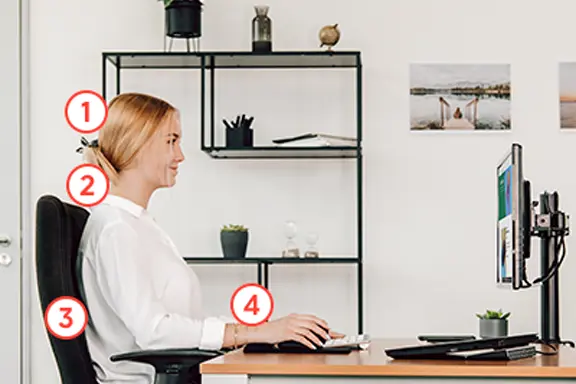
Ergonomics checklist
1. pain zone head
Adjusting the lighting and room colors for more concentration
2. pain zone neck
Alignment of the monitor and work documents to the individual viewing height
3. back pain zone
Organization of work surfaces for more freedom of movement
4. wrist pain zone
Adjusting the input devices and supports to a natural hand position
Expert tip: A crucial factor for greater concentration and effectiveness in your work is an organised work environment. A logical filing system on the desk serves as a good basis. Notes taken during a telephone call should be written in notebooks rather than on loose sheets, or recorded digitally. The decoration on the desk is best kept minimalistic, with a maximum of two personal items. Lastly, it is important to tidy up your workstation in the evening, as this will also help you to mentally switch off after work.
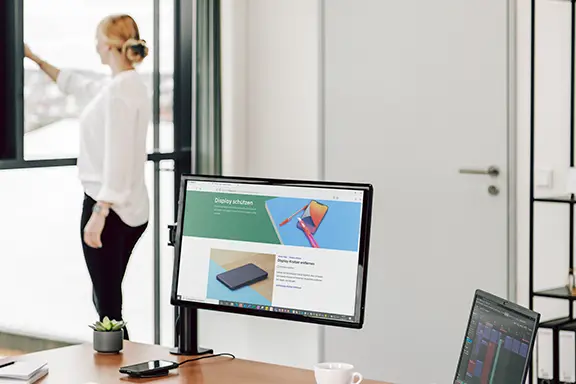
To prevent headaches
Alongside many other possible causes of headache, there is the key role played by lighting. Mental strain and performance are considerably influenced by brightness, position and colour of the light.
Expert tip: Regular ventilation and subdued, coordinated room colors also support concentration and performance. Noise levels also affect our well-being and performance. Noise in the working environment should therefore be avoided wherever possible. This can successfully counteract headaches and stress.
Products for the prevention of headaches
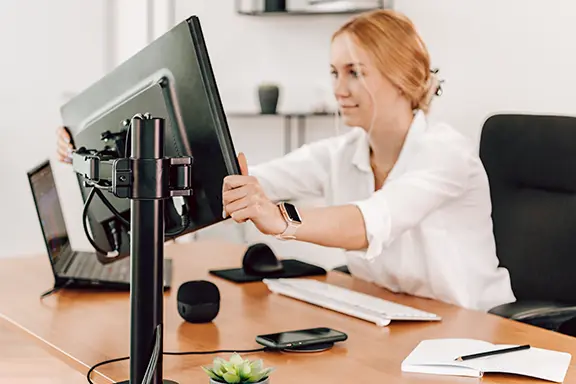
Prevention of neck pain
Unfavorable viewing angles on the monitor, frequent turning of the head and the wrong desk height cause tension in the neck. This can be quickly counteracted with flexible accessory products for individual and precise alignment of the devices. Flexible monitor arms, angled notebook stands and adjustable concept holders can be used to adapt to an individual viewing height. This means that a permanently unnatural head position can be avoided.
Expert tip: The ideal tabletop height is 75 cm on average. When looking at the highest line on the screen, the head should be tilted at a maximum angle of 35°. The forearm and hand should ideally be in a horizontal line when working with the mouse and keyboard.
Products for the prevention of neck pain
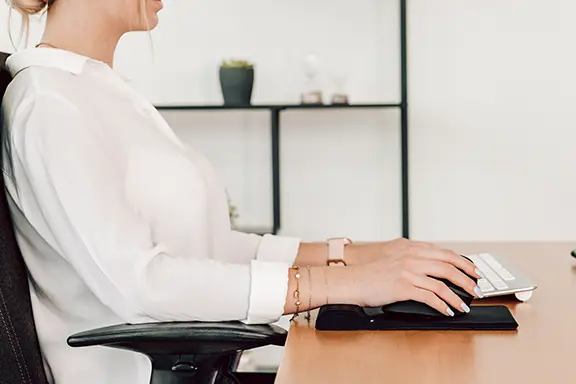
Prevention of arm pain
Pain in the shoulder, ulna and wrist is quickly caused by an unnatural arm and hand posture during monotonous screen work with a mouse and keyboard. The height at which the arms rest on the desk is also a decisive factor. The right equipment supports ergonomically correct posture.
Expert tip: The forearm and hand should ideally be in a horizontal line when working with the mouse and keyboard.
Products for the prevention of arm pain
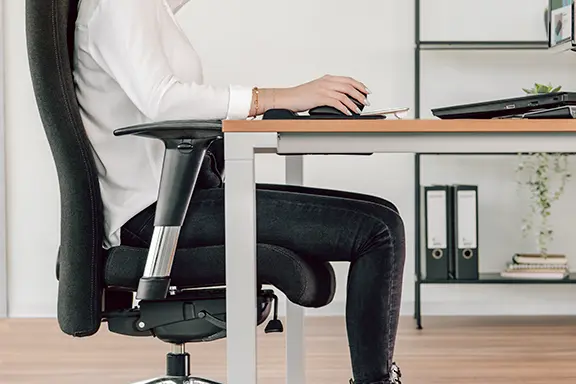
Prevention of back pain
Back pain is the result of permanently restricted freedom of movement at work and incorrect posture when sitting, standing or bending. It is the most frequently reported complaint in the workplace and therefore requires special attention.
Expert tip: Regularly changing your sitting position and loosening up exercises have a positive effect on your posture. In general, your legs should form a 90 degree angle when sitting and the soles of your feet should touch the floor completely
.Products for the prevention of back pain
Fit at work - exercises
With these four small exercises, you can specifically relieve the four pain zones - head, neck, wrists and back - and release slight blockages.
-
Exercise against headaches
- Close your eyes
- Stroke with your fingertips several times from the eyebrows outwards to the temple
-
Exercise against neck pain
- Slowly turn your head to the left and then look upwards
- Then hold your head straight and repeat the exercise for the right side
-
Exercise against back pain
- Stretch your arms above your head and cross your wrists
- Slowly tilt your upper body to the left and right
-
Exercises for wrist pain
- Stretch your arms forward at shoulder height, palms facing downwards
- Bend your wrist so that your fingers are pointing downwards
- Carefully pull your fingers towards your body with the other hand
- To stretch in the other direction, simply stretch your arm out with the palm facing upwards and repeat the exercise












